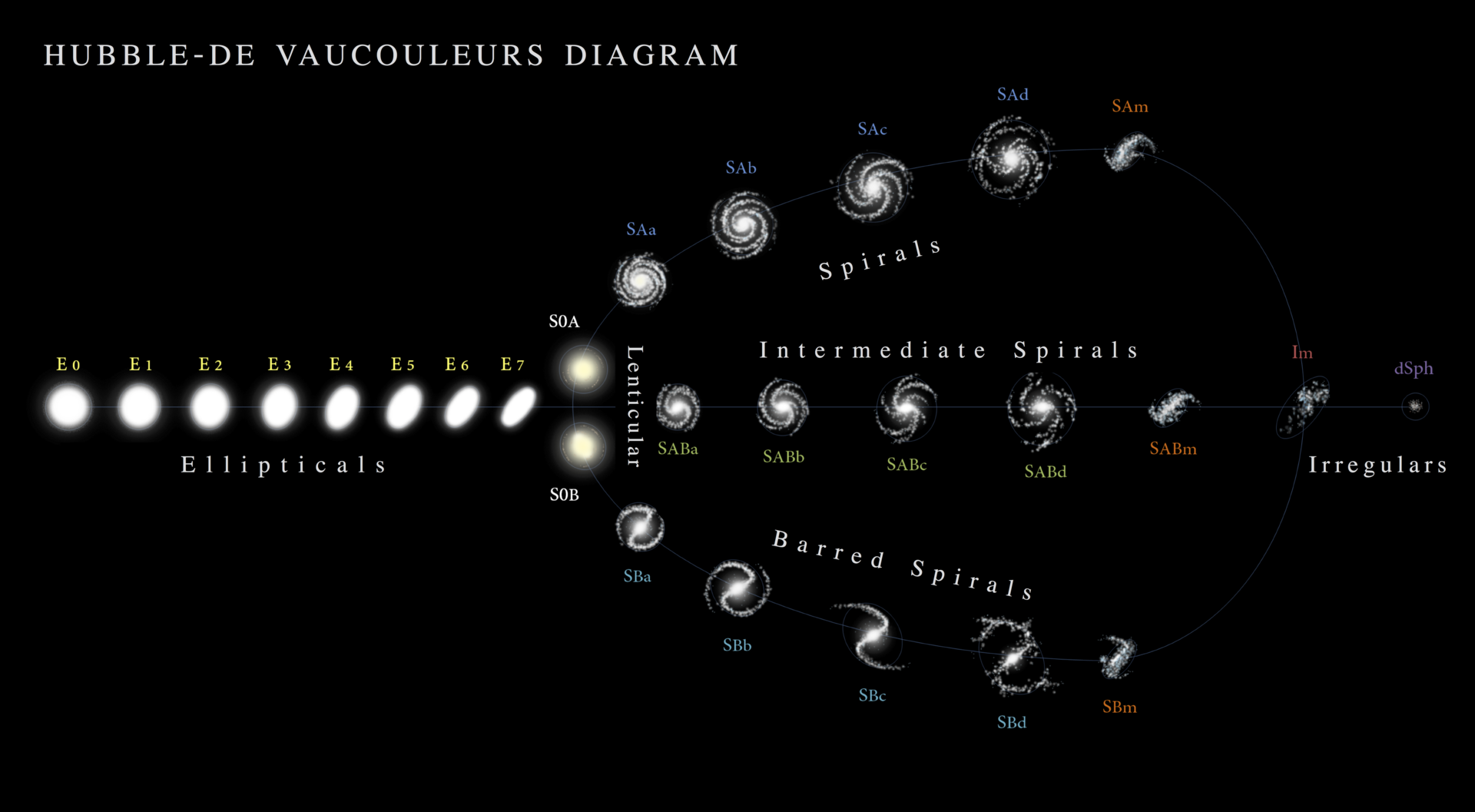Tara_Li wrote: ↑Sat Nov 23, 2019 4:00 am
Ann wrote: ↑Fri Nov 22, 2019 6:28 am
Tara_Li wrote: ↑Thu Nov 21, 2019 10:50 pm
Not sure what you're identifying as the elongated bulge - I'm looking at the tiny, circular as far as I can tell, bright central spot that the dust lanes come right up to and touch - but don't seem to enter. It only appears to be about 15 pixels in diameter.
Look at the picture at left. As you can see, the primary bar is a long, broad, rather faint yellowish structure. M61 has just such a bar. Can you see it? Note that the bar is "horizontal" in the illustration at left, but in the picture of M61, the bar is diagonally orientated.
...
At right you can see a comparison between a barred and an unbarred galaxy. In the unbarred galaxy (M101, left) the spiral arms start right at the (round) center. In NGC 7773, there is a yellowish horizontal structure sticking out from the round yellowish center. That is the bar. The spiral arms start at the ends of the bar.
Ann
Ok, I think I've identified the "bar" that you're considering part of the galactic core. It doesn't feel like particularly part of the core - it's way out from it, in fact.
It seems like the arms go way, way in, all the way to the real core.
Messier 61. ESA/Hubble & NASA.
Acknowledgements: G. Chapdelaine, L. Limatola, and R. Gendler.
Barred galaxy NGC 1097. Photo: ESO/Rob Gendler.
You really did find the bar of M61, Tara_Li. I agree with you that the long bar of M61 is not really a part of the core of this galaxy. All large galaxies have small, compact cores, surrounding a central black hole. In most cases the small core of the galaxy is very bright, too.
(Check out
this infrared image of the the central part of the Milky Way by NASA/ESA/JPL/Q.D. Wang/S. Stolovy if you feel like it. The white "maelstrom" at lower right is the central black hole surrounded by lots of bright stars in tight orbits around it, as far as I can understand. It is not certain that our galaxy has an inner ring around its black hole that is nearly as bright and pronounced as the inner rings of M61 and NGC 1097.)
Back to M61. It is somewhat hard to see the different components of M61, because M61 has so much star formation that its arms are broad, uneven and "messy". But no, the arms of M61 does not go all the way to its core.
Compare M61 with NGC 1097, whose structure is much "cleaner" and easier to see. Just like M61, NGC has a small core with a supermassive black hole in its center. Just like M61, NGC 1097 has a small bright inner ring surrounding the compact core. Just like M61, NGC 1097 has a long broad elliptical-shaped yellowish bar. Just like M61, NGC 1097 has two long curved dust lanes emanating from the inner bright ring and connecting the inner ring with the blue starforming arms which start at the ends of the bar. The curved dust lanes inside the bar are not considered parts of the arms.
You can see other dust structures in the bulge, not just the two main long dark dust lanes connecting the inner ring with the arms. Those dust structures are also not parts of the arms.
Unlike M61, NGC 1097 has a bright outer bluish ring surrounding the yellowish bulge. In M61 the arms are a bit of a mess, because they are so broad and uneven, and no clear outer ring surrounding the bar can be easily seen.
Also unlike M61, NGC 1097 has long, rather narrow spiral arms that clearly start at the ends of the bar. The structure of M61 is much messier (that's funny because M61 is really
Messier 61), and the bar structure of M61 is not as pronounced as the bar structure of NGC 1097.
Ann
 Messier 61 Close Up
Messier 61 Close Up



